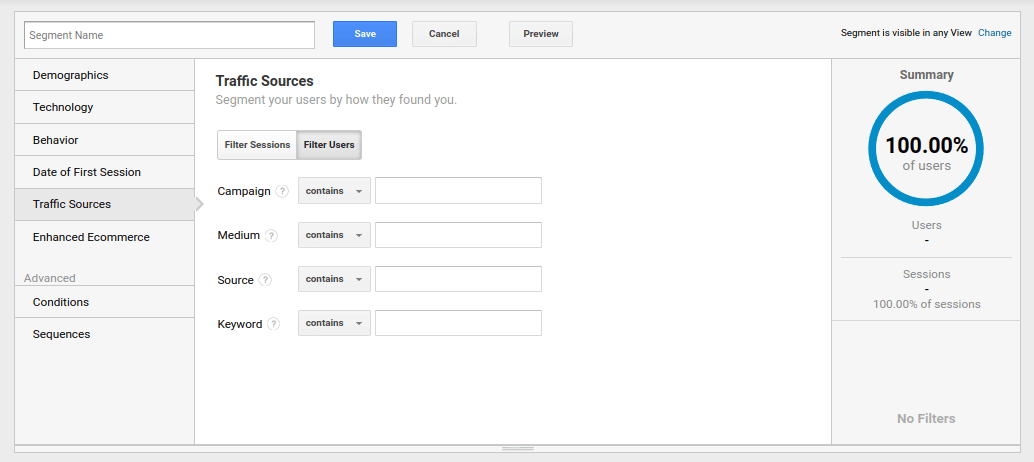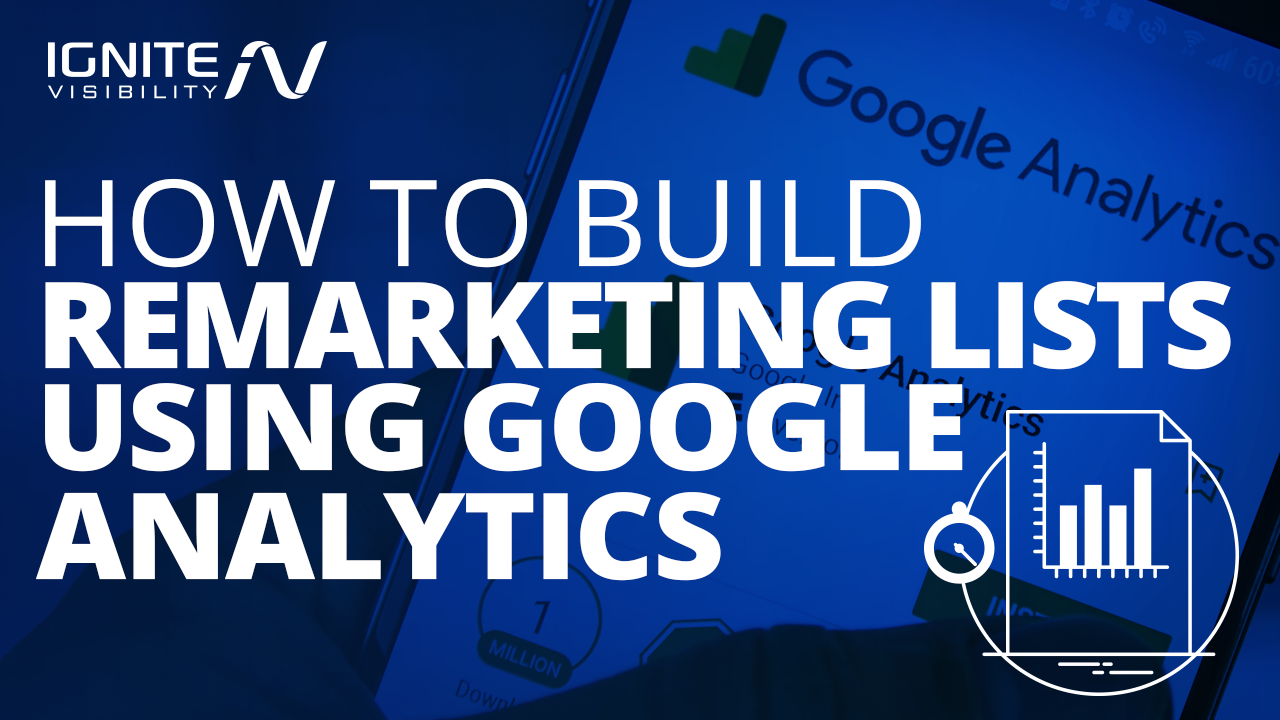Key Functions of Remarketing In Google Analytics Explained
Key Functions of Remarketing In Google Analytics Explained
Blog Article
Effective Techniques for Remarketing in Google Analytics
Via tactical target market segmentation, tailored remarketing listings, and engaging ad creatives, organizations can craft personalized projects that resonate with their target audience. By checking out the nuances of dynamic remarketing and leveraging advanced tracking tools, services can unlock the complete potential of their remarketing initiatives, leading to boosted brand exposure and consumer interaction.
Audience Division
Making use of target market division is an essential method in maximizing the efficiency of remarketing campaigns within Google Analytics. By splitting your audience right into unique groups based on their actions, demographics, or rate of interests, you can customize your advertising and marketing messages to be more relevant and interesting. This strategy enables you to provide personalized ads to specific sections, increasing the probability of conversion.

Furthermore, target market segmentation helps you recognize the differing requirements and preferences of various customer groups, permitting you to craft more compelling ad creatives and deals. This targeted technique not just enhances the effectiveness of your remarketing initiatives yet likewise enhances total project efficiency.
Establishing Remarketing Checklists
To successfully carry out remarketing techniques in Google Analytics, the initial step involves creating targeted remarketing listings based on certain target market interactions. Establishing remarketing checklists allows online marketers to segment their internet site visitors into different groups based on their habits, such as web pages watched, products looked for, or activities handled the website. By defining these sections, marketing experts can after that produce appropriate and personalized ads that target these particular groups, increasing the possibility of conversion.
Remarketing checklists can be established up making use of different standards such as page sees, duration of check out, particular objective completions, or also details events caused on the website. This degree of personalization allows online marketers to tailor their advertisements to match the interests and preferences of each fractional target market, causing higher interaction and conversion rates.
In addition, remarketing checklists can likewise be created based on data imported from various other sources like CRM systems, enabling a lot more accurate targeting. By establishing up these targeted remarketing checklists, marketing professionals can properly reach out to potential customers who have already shown rate of interest in their products or solutions, making best use of the effect of their remarketing projects.
Creating Compelling Ad Creatives
After segmenting internet site visitors into targeted remarketing checklists based upon particular audience communications, the following essential step is to craft engaging ad creatives that reverberate with each segmented team's rate of interests and preferences. The effectiveness of remarketing projects heavily relies upon the ability of these advertisement creatives to record the focus of the target market and drive them to take the wanted action.
To develop compelling ad creatives, it is necessary to understand the special features of each segmented group (What Is “Remarketing” In Google Analytics?). Customizing the messaging, visuals, and offers to line up with the interests and preferences of the target market can significantly boost the opportunities of conversion. Utilizing dynamic ads that immediately change content based upon the customer's habits can likewise boost the customization of the advertisement experience

Monitoring Performance and Optimization
Reliable tracking of project performance and consistent optimization are vital facets of successful remarketing strategies in Google this content Analytics. To guarantee the effectiveness of remarketing projects, online marketers need to consistently track crucial performance metrics such as click-through prices, conversion prices, and return on advertisement invest. By monitoring these metrics, marketing professionals can gain valuable understandings into the performance of their campaigns and identify areas for enhancement.
In Google Analytics, marketing experts can leverage tools like conversion tracking and target market division to analyze the performance of their remarketing campaigns. Conversion tracking allows marketers to track certain actions that individuals take after clicking a remarketing advertisement, offering beneficial information on the effectiveness of the campaign in driving desired end results. Target market segmentation, on the other hand, allows marketers to divide their target market into different segments based upon numerous requirements such as demographics, behavior, and rate of interests, enabling even more targeted and customized remarketing efforts.
Continuous optimization is necessary for making the most of the effect of remarketing campaigns. Marketing professionals ought to use A/B screening to try out various ad creatives, messaging, and targeting approaches to recognize one of the most efficient strategies. By frequently analyzing project efficiency information and making data-driven optimizations, marketing experts can ensure that their remarketing projects are achieving the preferred results and driving conversions effectively.
Leveraging Dynamic Remarketing
Making use of dynamic remarketing can significantly enhance the relevance and effect of targeted ads in Google Analytics. This sophisticated strategy allows advertisers to show personalized advertisements to users who have previously visited their internet site or used their mobile application. By dynamically displaying services or products that the users have actually revealed passion in, dynamic remarketing helps to keep the brand fresh in their minds and motivates them to go back to finish a purchase.

Additionally, vibrant remarketing campaigns can be automated and enhanced in real-time based upon performance information, guaranteeing that the advertisements remain pertinent and reliable. By leveraging dynamic remarketing in Google Analytics, advertisers can create more impactful and targeted marketing campaign that reverberate with their audience and drive outcomes.
Final Thought
In verdict, reliable remarketing methods in Google Analytics include audience look at these guys segmentation, targeted remarketing checklists, engaging advertisement creatives, efficiency tracking, and dynamic remarketing. By concentrating on customized advertisements, data analysis, and constant optimization, businesses can increase conversion prices and drive engagement successfully. Leveraging devices like conversion monitoring makes certain that Continue ads continue to be individualized and appropriate, causing general success in remarketing initiatives.
Through tactical audience division, customized remarketing checklists, and appealing ad creatives, businesses can craft tailored projects that reverberate with their target audience. Using dynamic advertisements that automatically adjust material based on the customer's actions can likewise improve the personalization of the advertisement experience.
Conversion monitoring permits online marketers to track particular activities that individuals take after clicking on a remarketing advertisement, giving beneficial information on the effectiveness of the campaign in driving preferred outcomes.Utilizing vibrant remarketing can dramatically boost the significance and effect of targeted ads in Google Analytics - What Is “Remarketing” In Google Analytics?.In conclusion, efficient remarketing approaches in Google Analytics include target market division, targeted remarketing listings, engaging ad creatives, efficiency monitoring, and vibrant remarketing
Report this page